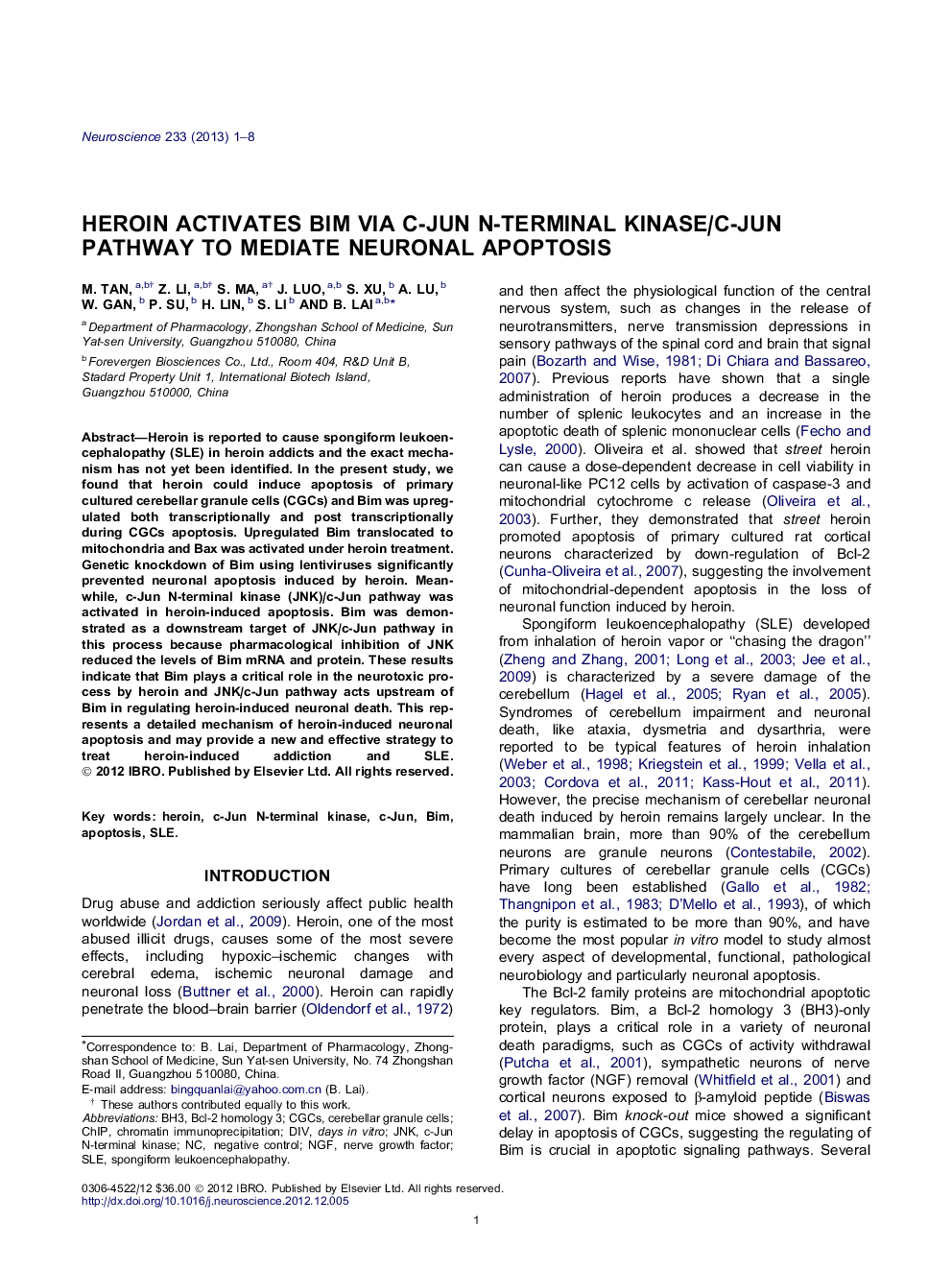| Article ID | Journal | Published Year | Pages | File Type |
|---|---|---|---|---|
| 4338067 | Neuroscience | 2013 | 8 Pages |
Heroin is reported to cause spongiform leukoencephalopathy (SLE) in heroin addicts and the exact mechanism has not yet been identified. In the present study, we found that heroin could induce apoptosis of primary cultured cerebellar granule cells (CGCs) and Bim was upregulated both transcriptionally and post transcriptionally during CGCs apoptosis. Upregulated Bim translocated to mitochondria and Bax was activated under heroin treatment. Genetic knockdown of Bim using lentiviruses significantly prevented neuronal apoptosis induced by heroin. Meanwhile, c-Jun N-terminal kinase (JNK)/c-Jun pathway was activated in heroin-induced apoptosis. Bim was demonstrated as a downstream target of JNK/c-Jun pathway in this process because pharmacological inhibition of JNK reduced the levels of Bim mRNA and protein. These results indicate that Bim plays a critical role in the neurotoxic process by heroin and JNK/c-Jun pathway acts upstream of Bim in regulating heroin-induced neuronal death. This represents a detailed mechanism of heroin-induced neuronal apoptosis and may provide a new and effective strategy to treat heroin-induced addiction and SLE.
Graphical abstractFigure optionsDownload full-size imageDownload high-quality image (31 K)Download as PowerPoint slideHighlights► Bim is significantly upregulated in heroin-induced apoptosis of CGCs. ► Upregulated Bim translocates to mitochondria, activating Bax under heroin treatment. ► Genetic knockdown of Bim protects GCGs from heroin induced apoptosis. ► JNK/c-Jun pathway is activated, and regulates Bim induction in heroin-induced apoptosis.
